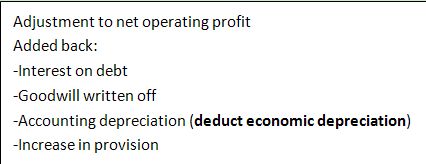扫码下载APP
及时接收考试资讯及
备考信息
1. Alpha value
Share’s alpha value is a measure of its abnormal return, which is the amount by which the share’s returns are currently above or below the required return, given the level of systematic risk. If it is positive, investors who don’t hold shares will be tempted to buy them to take advantage of the abnormal return, and investors who do hold shares will want to hold on to them so share price will rise. If it is negative, investors won’t want to buy them, and current holders will want to sell them, so share price will fall.
Current return=expected return+- alpha value
2. Arbitrage pricing model
In CAPM model, single factor is considered, but in APM, it assumes that the return on securities is based on a number of independent factors.
3. Investment decisions
•Organic growth
The companies expand or diversify by developing their own internal resources.
•Growth by acquisition
It provides a means of entering a market, or building up a market share more quickly and or at lower cost than would be incurred if the company tries to develop its own resources.
4. Financing decisions
•Short-term source: overdraft, short-term loan, trade credit, leasing.
•Long-term source: bond, issue shares.
•Pecking order: retained earnings, debt, equity
5. EVA TM
EVA=NOPAT-(Cost of capital×Capital employed)
NOPAT is net operating profit after tax adjusted for non-cash expenses

6. Scrip dividends
It is a dividend paid by the issue of additional company shares rather than by cash.
7. The residual theory of dividend payments
Firm only pay dividends if all the profitable investment opportunities have been funded. It assumes that internal funds are the cheapest source of financing, and the company will resort to external financing only if the available internal funds, current and retained earnings have been exhausted.
上一篇:F1的历年通过率统计
Copyright © 2000 - www.chinaacc.com All Rights Reserved. 北京正保会计科技有限公司 版权所有
京B2-20200959 京ICP备20012371号-7 出版物经营许可证 ![]() 京公网安备 11010802044457号
京公网安备 11010802044457号